NINTENDO Company

Nintendo is a Japanese video game and gaming systems company headquartered in Kyoto. The company was founded in 1889 by artisan Fusajiro Yamauchi under the name Nintendo Karuta and originally produced handmade "hanafuda" playing cards. In the 1960s, Nintendo moved into other businesses and officially went public under its current name, and in 1977 released the Color TV-Game, its first video game console. The company gained international recognition with the release of Donkey Kong in 1981, as well as the Nintendo Entertainment System and Super Mario Bros. in 1985.
Since then, Nintendo has released some of the most successful gaming systems, such as the Game Boy, Super Nintendo Entertainment System, Nintendo DS, Wii and Nintendo Switch. The company has created many major franchises such as Mario, Donkey Kong, The Legend of Zelda, Pokémon, Kirby, Metroid, Fire Emblem, Animal Crossing, Splatoon, Star Fox, Xenoblade Chronicles and Super Smash Bros.
Nintendo has many subsidiaries in Japan and abroad, as well as business partners such as The Pokémon Company and HAL Laboratory. Nintendo and its employees have received awards such as the Technology & Engineering Emmy Awards, Game Awards, Game Developers Choice Awards and the British Academy Video Game Awards. This is one of the richest and most expensive companies in the Japanese market.
Story
Start
Nintendo was founded on September 23, 1889 by master Fusajiro Yamauchi in Shimogyo-ku, Kyoto, Japan under the name Nintendo Karuta to produce and distribute hanafuda, the Japanese version of Karuta game cards. It is commonly believed that the name "Nintendo" means "leaving heaven to happiness", but this assumption has no historical basis; the name can also be translated as "temple of free hanafuda".
The company began producing Hanafuda playing cards in a special Japanese style (they were hand-drawn), which quickly gained popularity, and the company firmly established itself in the Japanese toy market. Yamauchi had no son to whom he could pass on the family business, so, following ancient Japanese tradition, he named his future son-in-law Sekiryo Kaneda (1883-1949) as his successor. Tom had to take his wife's maiden name and become Sekirio Yamauchi.
In 1947, Sekiryo founded the Marufuku company to distribute Hanafuda cards, as well as many other brands of cards introduced by Nintendo. Sekiryo, like his father-in-law, also only had daughters, causing his son-in-law Shikanojo Inaba to also take his wife's maiden name, thus becoming Shikanojo Yamauchi. However, the relationship did not work out, and Shikanojo, not having time to take the post of president, left the family, leaving his wife and children. His only son, Hiroshi, at the age of 22, despite initially being reluctant to do so, was forced to take over as CEO of Nintendo when Sekiryo (after Shikanojo left, he and his daughter began raising Hiroshi and his sisters). ) serious health problems began.
Toy company
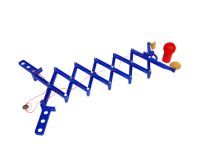
In 1963, Nintendo Playing Card Company Limited was renamed Nintendo Company, Limited.
In the 1970s, thanks to the designs of engineer Gunpei Yokoi, especially his Ultra Arm toy, Nintendo began creating toys for children and built its own toy factory. Gunpei Yokoi was moved from the technical maintenance department to the development department after the success of The Ultra Hand.
Since Yokoi was an engineer, he also designed electronic toys. At the time, they were completely new compared to traditional ones, allowing Nintendo to make more profit. Yokoi designed many toys, including the Ten Billion Barrels puzzle, the Ultra Machine baseball machine, and the Love Tester. One of the inventions made with Masayuki Uemura was the Nintendo Beam Gun Game, the ancestor of the NES Zapper.
Electronic games
The next stage in the company's development was slot machines. In 1978, Nintendo created a division whose sole purpose was to produce and sell arcade games.
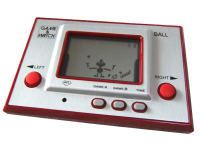
In 1980, Nintendo opened its subsidiary, Nintendo of America, in the United States, in New York City, headed by Minoru Arakawa, Yamauchi's son-in-law. It was then that Gunpei Yokoi created the first portable gaming device called Game & Watch. The device ran on watch batteries, used a simple LCD display, and had a built-in game. In Game & Watch, the game's background was static throughout the game, as it was a pre-drawn image placed under a transparent LCD screen. The background featured the game background and immutable static game objects. The overall dynamism of the image during the game was ensured only by the display of moving objects by the matrix of the LCD screen. The first Game & Watch games were Ball, Parachute and Fire. Later Popeye and Mickey Mouse appeared.
In 1980, at the request of the president of Nintendo, the young artist Shigeru Miyamoto came up with the game Donkey Kong. The key character of the game was a carpenter, to reflect which on the screen animation methods were used, sufficient for him to be able to rush, jump, climb ladders and take a sledgehammer. At the beginning, the main character was called Jumper, but then Miyamoto came up with a name for him - Mario, in honor of the Seattle realtor and contractor Mario Segale, from whom Nintendo of America rented an office during this time. Mario's key goal was to rescue a girl named Polina (this is not Princess Peach, as almost everyone thinks) from the clutches of the gorilla Donkey Kong, sitting at the very top of the game screen. The gorilla put all kinds of obstacles in Mario’s path: he threw barrels, springs and other improvised methods.
Donkey Kong was initially received negatively by South American arcade distributors. The Americans simply failed to understand what Nintendo was trying to implement. But as soon as people managed to play the game, the situation changed dramatically: sales of slot machines with Donkey Kong soared to unprecedented heights. The game was an unconditional bestseller both in the Land of the Rising Sun, for example, and in the USA. Later, a continuation of the game followed - Donkey Kong Jr., in which Donkey Kong, locked in a cage, was rescued by his son, and Mario played the role of the antagonist.
In 1982, Nintendo's office moved from New York to Seattle. At this time, the film company Universal sued Nintendo, ruling that Nintendo did not have the rights to use the Donkey Kong brand, for example, as it was similar to another title owned by the film company - King Kong. Nintendo-hired legal counsel Howard Lincoln won the case in court. Howard Lincoln was later appointed to lead Nintendo of America.
In 1983, the game Mario Bros. was seen on slot machines, in which Mario already appeared in front of players as a plumber and became the hero of personal full-fledged adventures, and his brother Luigi was invented to support him. Later the games Donkey Kong 3 and Popeye were released.
First home system
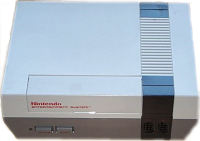
In 1983, Nintendo released its first 8-bit game console, Family Computer (Famicom), in the Land of the Rising Sun and, as it turned out, the most successful at that time - the system eventually occupied 90% of the Japanese market. In 1985, the console was released in the USA under the name Nintendo Entertainment System (NES). Several years later, after the NES was released in America, the console literally had no competitors left in the New World. The NES was the clear favorite in sales.
During the entire period of the existence of the 8-bit NES system, quite a large number of famous and high-quality games were created for it, including Super Mario Bros. and Super Mario Bros. 2, Kid Icarus, Metroid, The Legend of Zelda, Castlevania, Punch Out, etc. And almost all of them had their continuation on consoles of subsequent generations. Super Mario Bros. was released in 1990. 3, and by the end of the year it had sold 7 million copies.
In 1989, a fresh discovery by engineer Gunpei Yokoi was released - a miniature Game Boy gaming system. The Game Boy system consisted of a central 8-bit microprocessor and a watery crystal screen without backlighting, capable of displaying only 4 grayish colors. Ignoring the technical limitations of the system, which were trivial even for such a time, almost all autonomous creators began to make their own games for the Game Boy. During the existence of the Game Boy system on the market, these companies, like NEC, Atari and Sega, produced more massive miniature gaming systems with the best graphics capabilities, but none of them were able to shake the unquestioned leadership of the Game Boy. The Game Boy remained in demand in the era of 16-bit consoles, but was soon forced out of this competition. But with the release of Pokemon Red and Blue, the Game Boy regained its former fame.
Super Nintendo Entertainment System era

In 1990, in the Land of the Rising Sun, Nintendo offered the client its own fresh 16-bit Super Famicom console. The console supported a number of game screen resolution modes, was capable of displaying the largest number of colors and drawn objects on TV screens at the same time, and also had some mathematical functions for working with three-dimensional objects.
Having benefited greatly from sales of Super Mario Bros. 3 in America, in 1991 Nintendo released the Super Famicom in the USA under the name Super Nintendo (SNES).
Over the entire period of existence of the 16-bit console from Nintendo, a huge number of high-quality and successful games were released for it, and above all - games from the toy giant itself: Super Mario World, F-Zero, The Legend of Zelda: A Link to the Past, Super Metroid and other masterpieces of the design mind. And the creator of the 2nd echelon (second party), Rare, released these familiar games like Donkey Kong Country and Killer Instinct. The console was willingly supported by autonomous creators, and above all, these large companies like Square, Enix, Capcom and Konami. Thanks to their work, a large number of games were created for the Super Nintendo console: the Final Fantasy and Dragon Quest series, Castlevania, Ghouls'n Ghosts, Street Fighter 2, TMNT 4, etc.
Virtual Boy era
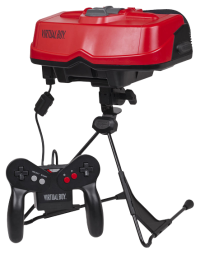
Back in 1994, Nintendo released the Virtual Boy, a 32-bit gaming system that used a number of reddish colors to display 3D graphics.
In 1995, Virtual Boy became the first gaming system made by Nintendo, which suffered death both in its homeland in the Land of the Rising Sun, for example, in the USA. Players who purchased this product from Nintendo complained about the inconvenience of the game. Their necks became tired from the constant tilt of their heads towards the system, which was possible to perform with only by first putting it on power and wearing special glasses. As it turned out, such a game also hurt my head.
And a number of independent creators agreed to support the Virtual Boy from the very beginning, but the main majority of them considered this product risky and categorically refused to create games for it. Shortly after the release of the Virtual Boy, Nintendo's systems were simply overwhelmed with a useless 32-bit system. Its implementation was negligible. An oversight with the Virtual Boy led to the departure of its creator (who also invented the Game Boy system), Gunpei Yokoi, from the company. In a tragic turn of events, Gunpei Yokoi died in a car accident the following year after his own death.
Nintendo 64 era
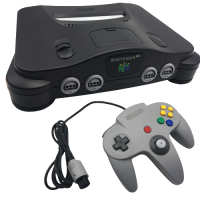
In 1996, the Nintendo 64 console was released in the Land of the Rising Sun for $250. Nintendo came up with an innovative controller for the new 64-bit gaming system. It contained the ability to control the game using two methods: one gave control of the game with the use of an ordinary D-Pad, the other with the use of an analog joystick. The controller had 9 buttons, and there was also a special port on the back of the device for memory cards and other additional modules.
The only problem in the Nintendo 64 console, which served as a pretext for Nintendo's falling out with almost all current standalone developers, was game modules (cartridges). For publishers and creators, ordinary CD-ROMs were more suitable. The cost of their production was low, they could be produced in huge quantities, unlike expensive and therefore dangerous game modules. For now, it was not clear how the new console would be received by users, and very important costs were already required for the pre-sale creation of game modules. All competing consoles, namely PlayStation from Sony and Saturn from Sega, used CD-ROM as a carrier of information.
Due to this, almost all the big companies, including those long-time Nintendo partners like Square, Enix and Namco, categorically refused to support the Nintendo 64 and announced their own proper plans for the new winner, the PlayStation.
Being deprived of interest in its own 64-bit system from large Japanese publishers, Nintendo, thanks largely to its own advertising efforts, employees and in particular the famous Shigeru Miyamoto, managed to achieve a sensation for the Nintendo 64, second only to the PlayStation in sales.
Throughout the intensive existence of the Nintendo 64 console on the market, Nintendo continued to follow in the footsteps of its own classic idea of “less is more.” The result was the games Super Mario 64, Wave Race 64, Pokemon Stadium, Mario Kart 64, Star Fox 64, GoldenEye 007, Diddy Kong Racing, The Legend of Zelda: Ocarina of Time, Banjo-Kazooie, Super Smash Brothers.
Super Mario 64, released in 1996 for the Nintendo 64, became the best-selling game for its platform and one of the best-selling games overall. SM64 received a large number of awards (as did its artist, Shigeru Miyamoto) and admiring reviews, and was repeatedly included in the prize spaces of the “Best Games of All Time” lists in various gaming publications and in online voting.
The game The Legend of Zelda: Ocarina of Time, released in 1998, on which Shigeru Miyamoto worked for many years, was named by almost all prominent gaming publications as the best game in the entire industry. The well-known Japanese weekly magazine Famitsu gave this game the highest score - 40 out of 40. At this point, Ocarina of Time contains the highest combined score from reviews of all major gaming publications among all games in the situation. In the United States alone, 2 and a half million copies of The Legend of Zelda: Ocarina of Time were sold between November 23 (the game's release date) and the end of the year.
In 1998, the Game Boy system regained its popularity. Nintendo released the Game Boy Camera, a small device that allowed you to take low-resolution black-and-white digital photos. The device was inserted into a connector intended for game modules. And a special printer (Game Boy Printer) allowed you to print pictures onto stickers designed for this purpose. However, a new version of the system was also spotted - Game Boy Color. The Game Boy Color featured a larger microprocessor and a screen capable of displaying 56 colors out of a 32,000-color palette at one time, and was compatible with all games developed for the black-and-white Game Boy system. Color versions of Tetris and The Legend of Zelda are being spotted around the release of the Game Boy Color.
Pokemon era
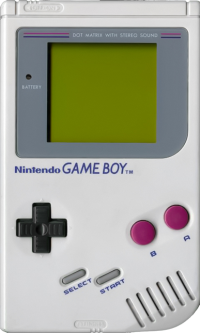
First in the Land of the Rising Sun, and then in the USA, Nintendo released the games Pokemon Red and Pokemon Blue for the Game Boy. Since the creation of Mario, the Pokemon gaming brand has become Nintendo's second greatest triumph, right up there with the Super Mario Bros. series. and The Legend of Zelda. In 1999, Pokemon's popularity was gaining momentum around the world. This year, 3 new games under the Pokemon brand were immediately released: Pokemon Snap, Pokemon Pinball and Pokemon Yellow.
Pokemon Snap was the first Pokemon game for the Nintendo 64. In it, the player acted as a photographer who had to find Pokemon and photograph them on film. Pokemon Pinball is a pinball game for Game Boy Color. Next came the game Pokemon Yellow - a remake of the games Pokemon Red and Blue, but this time the key character was the most famous Pokemon Pikachu.
The outbreak of Pokemon mania prompted Nintendo to return to producing playing cards and toys. The new assignment of business brought enormous benefits to the company. Supported by the famous cartoon, all sorts of products under the Nintendo-licensed Pokemon brand began to be seen: T-shirts, comics, soft toys, handbags, video cassettes.
The Pokemon card game has become as well-known a recreation as video games. The concept of the game was identical to other "battle" card games. The player had to collect and exchange cards in order to eventually own the most complete deck of Pokemon cards.
GameCube era
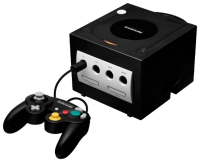
On May 12, 1999, the day before the opening of the Electronic Entertainment Expo (E3), Nintendo officially announced at a press conference that work was underway on a next-generation console called Dolphin (later renamed GameCube). The firm's partners in the plan were announced, covering large companies like Matsushita (Panasonic) and IBM. A short specification of the system was given, and Nintendo announced that Dolphin would use Mini-DVDs, which were invented by Matsushita, as information storage media.
In 2000, at the Space World exhibition, a miniature 32-bit gaming system Game Boy Advance and a family console of the latest generation GameCube were presented. The full technical properties of the Game Boy Advance were also announced there, the province and the first games were presented. The console was released on March 21, 2001 in the Land of the Rising Sun and June 11, 2001 in the USA. The Game Boy Advance is fully compatible with all previous versions of the Game Boy and has the ability to interact with the GameCube.
Nintendo DS era
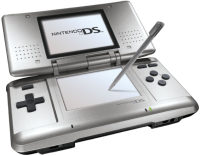
Nintendo DS, also popular as NDS or DS, also iQue DS in China, is a miniature gaming system released in 2004. It is recognizable by its own horizontal clamshell design, which is considered a return to Game & Watch, and the presence of two TFT LCD screens, the bottom of which is considered touchscreen. The system also has an integrated microphone and the support of the IEEE 802.11b/g WiFi wireless standard, which allows you to group consoles together at a distance of 10-30 meters, or with support for the Nintendo Wi-Fi Connection service.
The letters “DS” in the title stand for Dual Screen and Developers' System. During development, the system was popularized as Project Nitro.
Wii era

In June 2004, at an internal corporate briefing, Satoru Iwata announced that the company was working on a completely new system codenamed “Revolution”. Shigeru Miyamoto and a team of engineers led by Genyo Takeda took the most active role in the development of the system. For the first time in public, at the TGS exhibition in 2005, only the controller of the new console was shown. In May 2006, at E3, the entire console was shown, and the official name of the console was announced - Wii. The console was initially released on the South American market on November 19, 2006 at a cost of $249. In 2007, the console became the best-selling console in the Land of the Rising Sun and the USA. As of July 2012, the Wii console had sold 96.56 million units worldwide, thus becoming Nintendo's most successful console.
3DS era
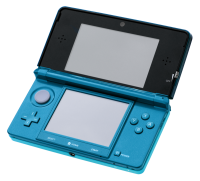
The console was first announced on March 23, 2010, and was already shown at E3 on June 15, 2010. The key difference between the Nintendo 3DS and its predecessor, the Nintendo DS, is the ability to reflect stereoscopic, three-dimensional effects without the use of external means. The new console went on sale first in the Land of the Rising Sun (February 26, 2011), then in Europe (March 25, 2011), and then in North America (March 27, 2011). Not very successful sales of the console due to the high cost and small number of games forced the company's instructions to lower the cost of the device, which actually spurred subsequent sales and lowered the price of Nintendo promotions. This led to losses for the company for the first time in 30 years. By the end of 2011, with the release of these games like “Super Mario 3D Land” and “Mario Kart 7”, the system began to gain increasing popularity and by mid-2012, the total number of 3DS devices sold worldwide exceeded 19 million. On July 28, 2012, in the Land of the Rising Sun and Europe and on August 19, 2012 in the USA, an improved version of the Nintendo 3DS, the Nintendo 3DS XL, went on resale.
Wii U era

It was first announced on June 7, 2011 at Nintendo's E3 2011 press conference. The game console is considered the successor to the Wii. The game console was released in the USA on November 18, 2012. In the European Union, the console was released on November 30, 2012, and in the Land of the Rising Sun on December 8. A special feature of the Wii U is considered to be a new controller, which has the ability to continue the game even during this time when the TV is turned off. It is already known that a number of companies have approved that their games will be released on the console. Confirmed games - LEGO City Stories, Mass Effect 3 (ported from other platforms), Darksiders 2, New Super Mario Bros. U, recent games from the Super Smash Bros., Pikmin 3, Assassin's Creed III, Sonic & All-Stars Racing Transformed, Aliens: Colonial Marines (port canceled), Ghost Recon Online, Bayonetta 2, ZombiU and Rayman Legends series.
Nintendo Switch era
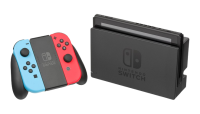
It was introduced on October 20, 2016 and is a hybrid of a miniature and stationary console. Released worldwide on March 3, 2017. The key feature of the Switch is the ability to operate both connected to a TV (via a special docking station), for example, and from the built-in screen in miniature mode.
In September 2017, Nintendo announced a partnership with the Chinese gaming company Tencent to publish a mass version of its commercially successful mobile game Honor of Kings on Switch. Reviewers said that thanks to this, Nintendo can borrow more space in China, an area where the Switch is not sold and where Tencent predominates. In November 2017, it was announced that Nintendo would be collaborating with Illumination, the animation division of Universal Pictures, to produce an animated film about Mario. On January 18, 2018, the company suggested a Labo cardboard construction set that included a set of mini-games for the Switch. In April 2018, Nintendo announced that Kimishima would step down as president of the company in June and be replaced by Shuntaro Furukawa, former CEO and outside director of The Pokémon Company.
In January 2019, Nintendo announced that in 2018 it generated $5.59 billion in revenue and $958 million in profit. In February 2019, Nintendo of America President Reggie Fils-Aimé announced his retirement. On April 15, 2019, Doug Bowser replaced him in this position.
On November 5, 2020, Nintendo reported its next successful quarter, in which the company's profit grew by 51% and operating profit increased by approximately one and a half times. Both of these indicators were significantly ahead of the monitoring of S&P Global Market Intelligence specialists. According to the results of the first 6 months of the 2020 financial year, the company’s profit reached $7.36 billion, which is 73.3% higher than last year’s figure. Net profit amounted to $2.04 billion, which is 243.6% higher than in the previous year.
On May 27, 2021, it became known that the company intends to release an updated version of its own Switch console in September or October 2021.
In June 2021, it became known that Nintendo announced its intentions to convert the land of the Nintendo Uji Ogura plant in the Japanese metropolis of Uji into a museum in which the company's products will be presented. The museum, temporarily titled “Nintendo Gallery,” is scheduled to open before the end of fiscal year 2023 (ends May 2024).
Activity
Other types of products
In addition to game consoles and all kinds of entertainment products, Nintendo is keen on producing interactive military shooting and marksman training simulators, similar to first-person shooters produced for computer game players, only with more high-quality images and gameplay close to reality. For the USA Army, Nintendo, through a regional subcontractor company, supplied the MACS or MARKS (Multipurpose Arcade Combat Simulator) shooting simulator, which is a set of a plastic mass-dimensional mockup of the M16 rifle with a projector for displaying on the screen images of tactical life with instantaneous problems arising due to structures or folds of territory by opponents (the gameplay, in essence, provided an improved game “Duck Hunt” with high-quality images and human figures instead of ducks).
Monetary characteristics
The company's profit in the economic year ending March 31, 2013 amounted to 635.4 billion yen ($6.4 billion), net profit was 7.1 billion yen ($72 million).
Nintendo game consoles
Consoles
- Color TV Game
- NES/Famicom
- SNES/Super Famicom
- Nintendo 64
- GameCube
- Wii
- Wii U
- Switch
Portable
- Game & Watch
- Game Boy
- Game Boy Color
- Virtual Boy
- Game Boy Advance
- Nintendo DS
- Nintendo 3DS
- Switch (Lite)